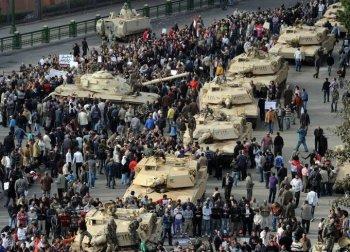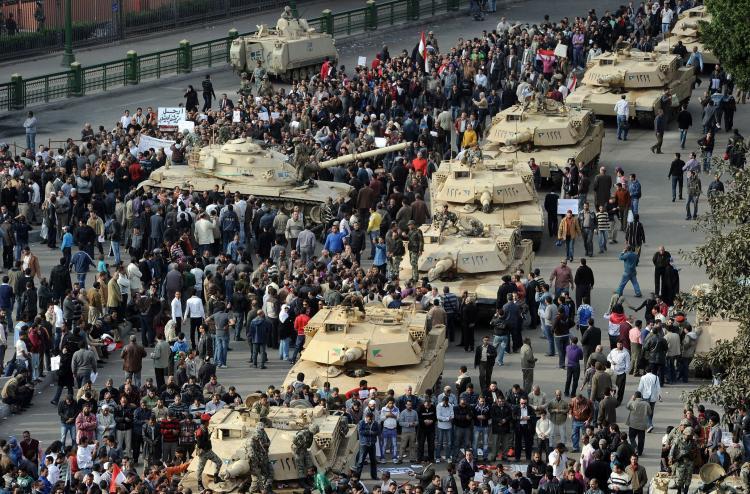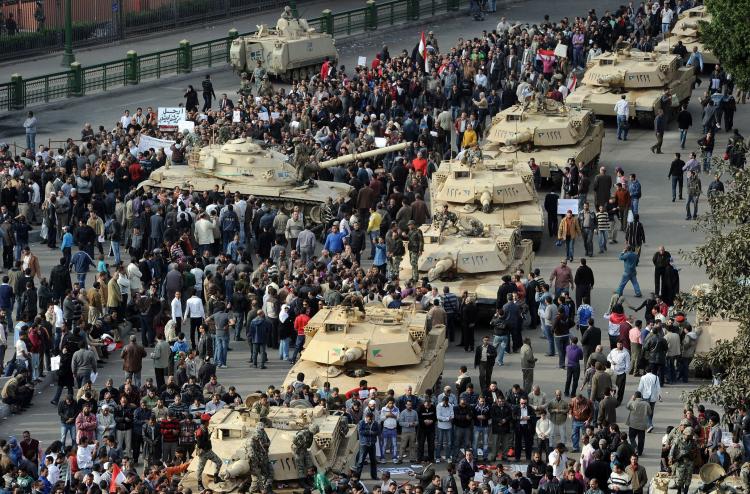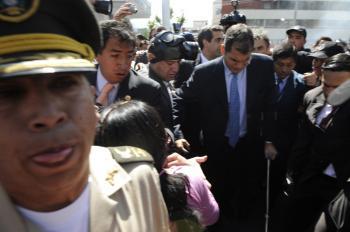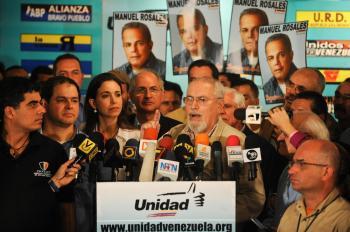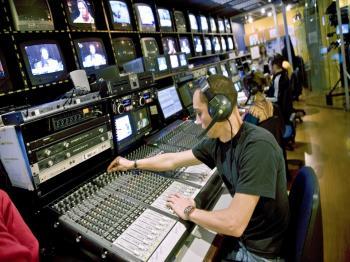Protesters continued to gather by the tens of thousands in central Cairo on Sunday, ignoring a 4 p.m. curfew that move up three hours by Egyptian authorities, as the army presence swelled in an attempt to contain demonstrations.
More tanks have been brought into the city center and military aircraft, at first jets and later helicopters, flew low overhead in a show of force against the mostly-student crowd gathered at Tahrir Square.
On Saturday, all police and regular security forces were withdrawn from the streets of Cairo, leaving only the army.
So far, military leaders have said that they will not use force against demonstrators, but tension and uncertainty on the ground remain high with many students on the streets bracing for a possible crackdown.
Talk has been circulating among youth protesters all weekend, wondering if the situation will devolve into another Tiananmen Square-type incident, when Chinese authorities violently suppressed student-led pro-democracy demonstrations in June 1989.
Sources from inside Egypt report of looting in several areas across the country, prompting locals to organize vigilante groups in order to protect their property.
At the beginning of the anti-government protests, which started on Tuesday, Jan. 25, tensions between police and protesters were low with both sides even sharing food and drinks.
The situation started to escalate with police using force against the students after some protesters threw rocks and Molotov cocktails at police and burned police vehicles.
However, a source within the police told The Epoch Times that he and others felt the violence had been instigated by agitators among the otherwise peaceful student protesters.
On Sunday, U.S. Secretary of State Hillary Clinton said Egypt’s “government must open an inclusive national dialogue with the people of Egypt as part of a lengthy process of reform,” and that the “U.S. supports a peaceful, orderly transition to free, fair, and credible elections that lead to real democracy in Egypt,” according to Twitter posts by State Department spokesperson P.J. Crowley.
With reporting by Laila Hassan in Cairo.
More tanks have been brought into the city center and military aircraft, at first jets and later helicopters, flew low overhead in a show of force against the mostly-student crowd gathered at Tahrir Square.
On Saturday, all police and regular security forces were withdrawn from the streets of Cairo, leaving only the army.
So far, military leaders have said that they will not use force against demonstrators, but tension and uncertainty on the ground remain high with many students on the streets bracing for a possible crackdown.
Talk has been circulating among youth protesters all weekend, wondering if the situation will devolve into another Tiananmen Square-type incident, when Chinese authorities violently suppressed student-led pro-democracy demonstrations in June 1989.
Sources from inside Egypt report of looting in several areas across the country, prompting locals to organize vigilante groups in order to protect their property.
At the beginning of the anti-government protests, which started on Tuesday, Jan. 25, tensions between police and protesters were low with both sides even sharing food and drinks.
The situation started to escalate with police using force against the students after some protesters threw rocks and Molotov cocktails at police and burned police vehicles.
However, a source within the police told The Epoch Times that he and others felt the violence had been instigated by agitators among the otherwise peaceful student protesters.
On Sunday, U.S. Secretary of State Hillary Clinton said Egypt’s “government must open an inclusive national dialogue with the people of Egypt as part of a lengthy process of reform,” and that the “U.S. supports a peaceful, orderly transition to free, fair, and credible elections that lead to real democracy in Egypt,” according to Twitter posts by State Department spokesperson P.J. Crowley.
With reporting by Laila Hassan in Cairo.
